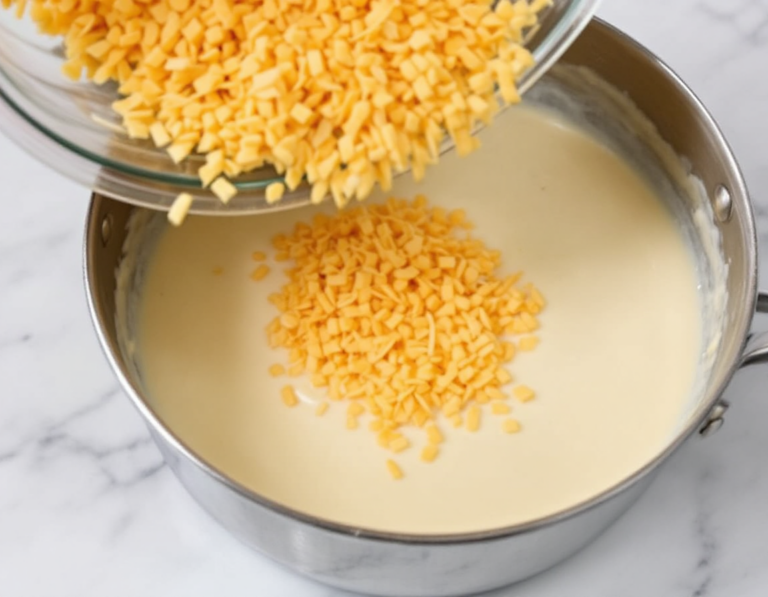
Broccoli and cheese—it’s like a culinary love story, isn’t it? When I was a kid, I used to think of broccoli as tiny trees, and adding cheese sauce was like a magical molten river flowing through a forest. Fast forward to today, and nothing beats whipping up a quick, creamy broccoli cheese sauce for those mid-week dinners where time’s tighter than your jeans after Thanksgiving.
Steps
- Shred the cheddar cheese and let it reach room temperature before using. This will help ensure a smooth melting process.
- In a small saucepan, melt the butter over medium heat. Whisk in the flour and continue whisking for 1-2 minutes until the flour smell dissipates.
- Gradually add the milk in small amounts, whisking continuously. Allow the mixture to come to a gentle boil, then reduce the heat to a simmer.
- Lower the heat to the minimum setting. Slowly add the shredded cheddar cheese, while whisking constantly to prevent any clumps.
- Keep whisking until the sauce is smooth and well-blended. Although it may seem thin initially, it will thicken as it stands.
- Once the desired thickness is achieved, remove the sauce from the heat and serve it immediately with your favorite dishes.

Ingredients
- 2 tablespoons of butter
- 2 tablespoons of flour
- 1 cup of milk
- 8 ounces of cheddar cheese, shredded
Nutritional Values
Calories: 659kcal | Carbohydrates: 13g | Protein: 33g | Fat: 53g | Saturated Fat: 33g | Trans Fat: 1g | Cholesterol: 161mg | Sodium: 857mg | Potassium: 284mg | Fiber: 1g | Sugar: 7g | Vitamin A: 1684IU | Calcium: 960mg | Iron: 1mg
FAQ
- How can I ensure my cheese sauce has a smooth and creamy texture?
- To achieve a smooth consistency, make sure the cheese is at room temperature before melting. Avoid pre-shredded cheeses and opt for block cheese that you shred yourself. Add the cheese gradually to a warm base to prevent the fat from separating, which can cause a grainy texture.
- What are some good pairings for cheese sauce?
- Cheese sauce pairs well with roasted broccoli, cauliflower, baked potatoes, homemade fries, and burgers. It also works as a delicious dip for pretzels, bread sticks, chicken tenders, and tortilla chips.
- How should I store and reheat leftover cheese sauce?
- Store leftover cheese sauce in the refrigerator and use it within 3-5 days. To reheat, warm it in a skillet over medium-low heat, adding splashes of milk to help restore its original consistency.
- Can cheese sauce be frozen for later use?
- Freezing cheese sauce is not recommended as creamy, dairy-based sauces often change in consistency after being frozen and reheated, resulting in a less desirable texture.
Tips
- Use Room Temperature Cheese: To achieve the creamiest consistency, ensure that your cheese is at room temperature before melting. This helps the cheese melt smoothly and evenly.
- Shred Your Own Cheese: Opt for block cheese and shred it yourself at home. Pre-shredded cheese often contains anti-caking agents that can prevent it from melting properly.
- Avoid Overheating: Gradually add the cheese to a warm base rather than a hot one. Excessive heat can cause the fat in the cheese to separate, leading to a grainy or clumpy texture.
- Reheat Gently: If you have leftovers, reheat the cheese sauce over medium-low heat in a skillet. Add a bit of milk to help restore its original creamy consistency.
Equipment
- Small Saucepan – If you don’t already have a suitable saucepan for making sauces, you may need to purchase one.
- Whisk – A whisk is essential for ensuring a smooth consistency in the sauce.
- Cheese Grater/Shredder – Since the recipe advises against using pre-shredded cheese, a cheese grater may be necessary if you don’t already own one.